Physical Address
304 North Cardinal St.
Dorchester Center, MA 02124
Physical Address
304 North Cardinal St.
Dorchester Center, MA 02124
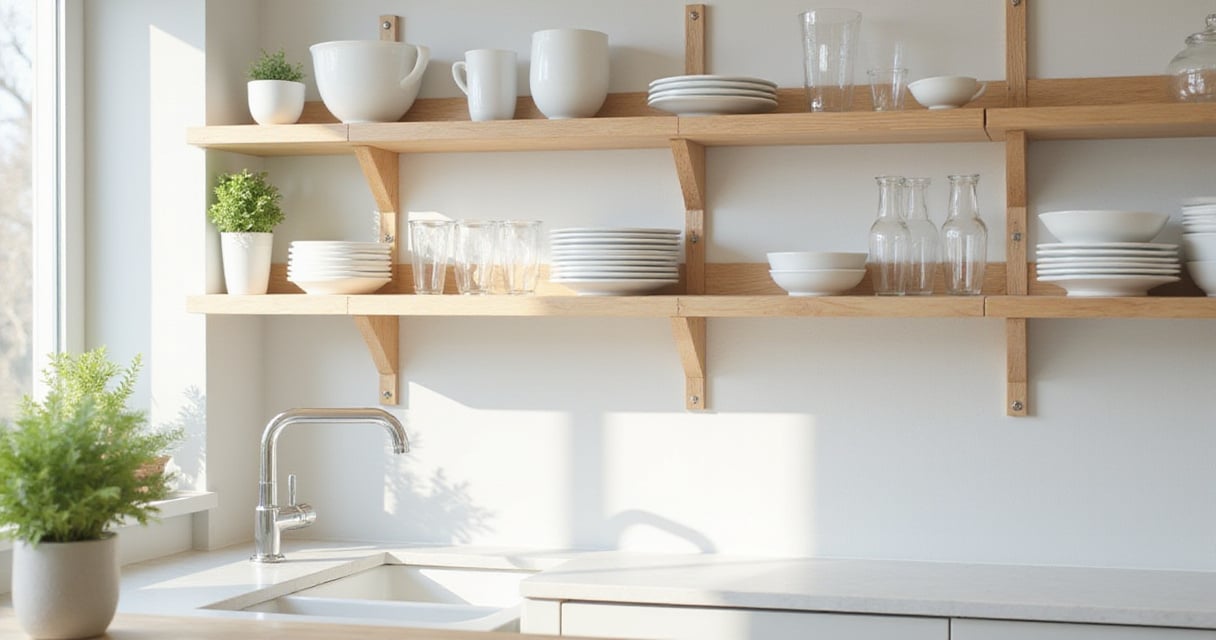
Discover the 21 hottest kitchen design trends of 2025, from smart technology and bold colors to sustainable materials and multifunctional spaces. Transform your kitchen into a stylish, efficient haven that reflects your personality and modern lifestyle.
Is your kitchen stuck in the past? Do you dream of a space that’s not only beautiful but also incredibly functional and reflective of your modern lifestyle?
Well, get ready to ignite your culinary passion because 2025 is bringing a revolution to kitchen design! Forget drab and dated – this year is all about bold statements, smart technology, and creating a heart of the home that truly inspires.
Imagine a kitchen that anticipates your needs, simplifies your tasks, and elevates your entire cooking experience. This is the reality of tech-savvy kitchens, a trend rapidly gaining momentum as homeowners seek seamless integration of smart home technology. Popular smart appliances range from refrigerators that track groceries and suggest recipes to ovens you can preheat remotely. Voice-controlled faucets and induction cooktops with integrated displays are becoming increasingly sought after, while smart lighting systems adapt to the time of day or task at hand.
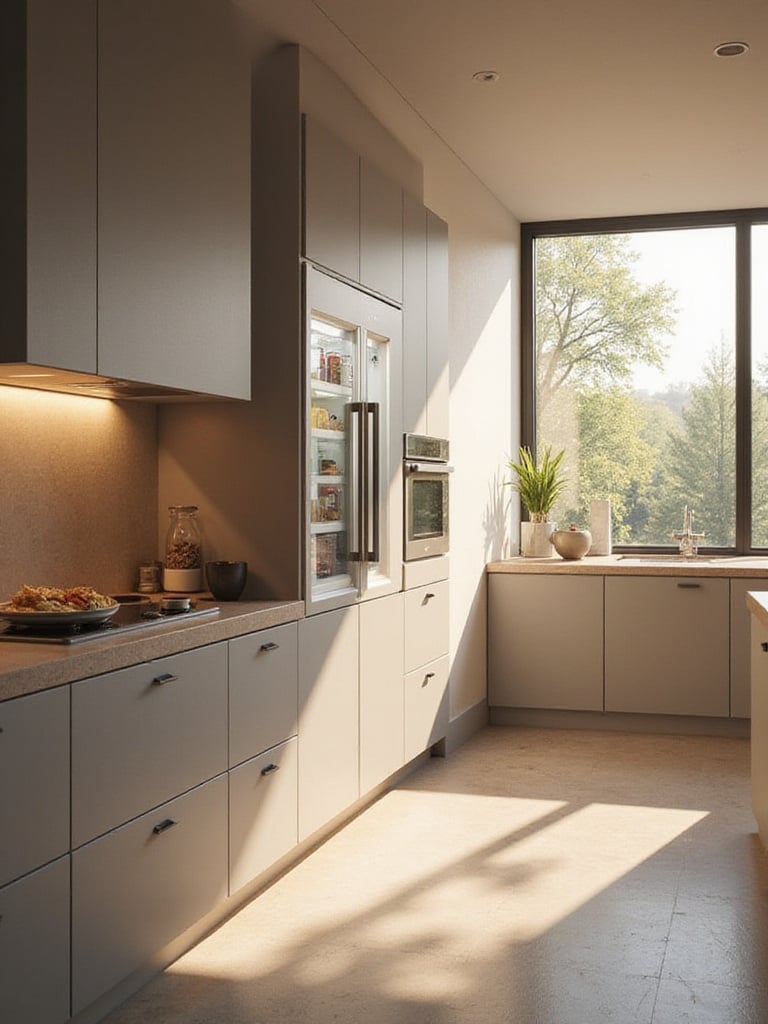
It’s not just about fancy gadgets; smart home integration fundamentally improves the cooking experience itself. By automating mundane tasks and providing instant information, these technologies free you to focus on the joy of cooking. Voice assistants become your sous chefs, setting timers, converting measurements, and reading recipes while your hands are busy. The result? A kitchen that works smarter, not harder, making cooking more efficient and enjoyable.
Here’s the inside story: start small by upgrading one appliance at a time. Choose a smart appliance that addresses a specific pain point in your current kitchen setup – perhaps a smart oven with remote preheating or a refrigerator that helps manage inventory.
The game-changer happened as I moved from technology to color. Prepare to be captivated by the next kitchen design trend that’s shaking up homes everywhere – bold and expressive cabinetry.
After years of kitchens dominated by safe, neutral tones, homeowners are yearning for spaces that reflect their personalities. Bold color cabinets are emerging as a powerful kitchen design trend in 2025, offering a refreshing departure from the predictable. This shift towards bolder hues is part of a larger movement embracing maximalism and color to create living environments that are anything but ordinary.
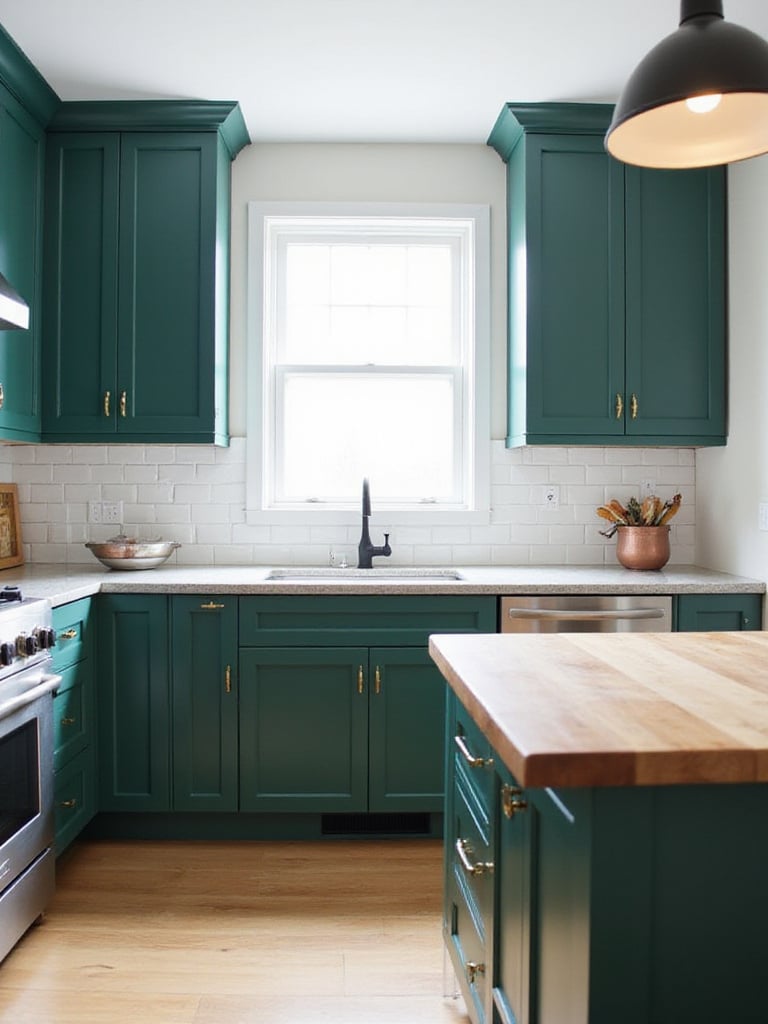
When it comes to bold cabinet colors, the choices are wonderfully diverse. Deep jewel tones like emerald green and sapphire blue create a luxurious atmosphere. Earthy tones such as terracotta and olive green offer a grounded, natural vibe. For pure fun, unexpected pops like vibrant coral or mustard yellow make their mark. Remember – balance is key when incorporating such impactful colors!
“Color is the defining element that transforms a functional kitchen into an expression of personal style. Don’t be afraid to make a statement!”
The surprising part is how these vibrant cabinets can completely transform the energy of your kitchen. From this colorful journey, we now transition to a trend that brings warmth and organic beauty into the space – the resurgence of natural wood finishes.
In 2025, there’s a palpable shift towards bringing the serenity of the outdoors into our homes, and natural wood finishes are playing a starring role in kitchen design trends. This approach is deeply rooted in biophilic design principles, creating spaces that foster a sense of calm and connection to nature. Natural wood introduces warmth and captivating visual interest, providing beautiful contrast to cooler elements like stone and metal. The growing availability of sustainably sourced wood perfectly aligns with increasing consumer demand for environmentally responsible choices.
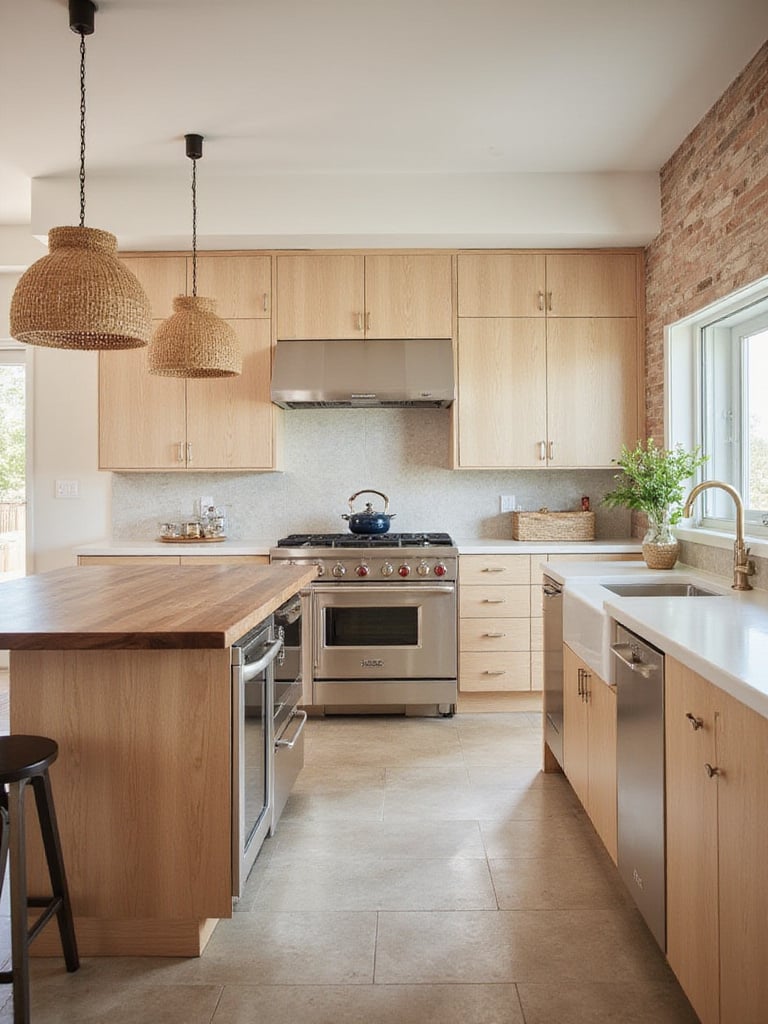
When considering wood for your kitchen, several species are gaining popularity this year. White oak stands out for its exceptional durability and light, neutral tone. Walnut offers a richer, more sophisticated aesthetic with its deep, warm hues. Maple remains reliable and budget-friendly, while ash is gaining recognition for its distinctive grain patterns. Even reclaimed wood is making waves, celebrated for its unique character and inherent sustainable appeal.
What many people overlook is that wood is naturally antibacterial, making it a hygienic choice for kitchen surfaces. When selecting finishes, order samples and view them in your kitchen’s lighting to ensure they complement your existing palette.
Moving from the organic charm of natural wood, let’s explore a countertop material that offers both enduring style and exceptional practicality – quartz.
Quartz countertops continue to reign supreme in kitchen design trends for 2025, and for good reason. Their enduring popularity stems from a winning combination of exceptional durability, remarkable style versatility, and incredibly low maintenance. In today’s fast-paced world, homeowners prioritize longevity and ease of care. The variety of colors and patterns (including stunning marble and granite imitations) allows quartz to seamlessly integrate into a range of kitchen styles. Its non-porous nature provides peace of mind, resisting stains, bacteria, and scratches.
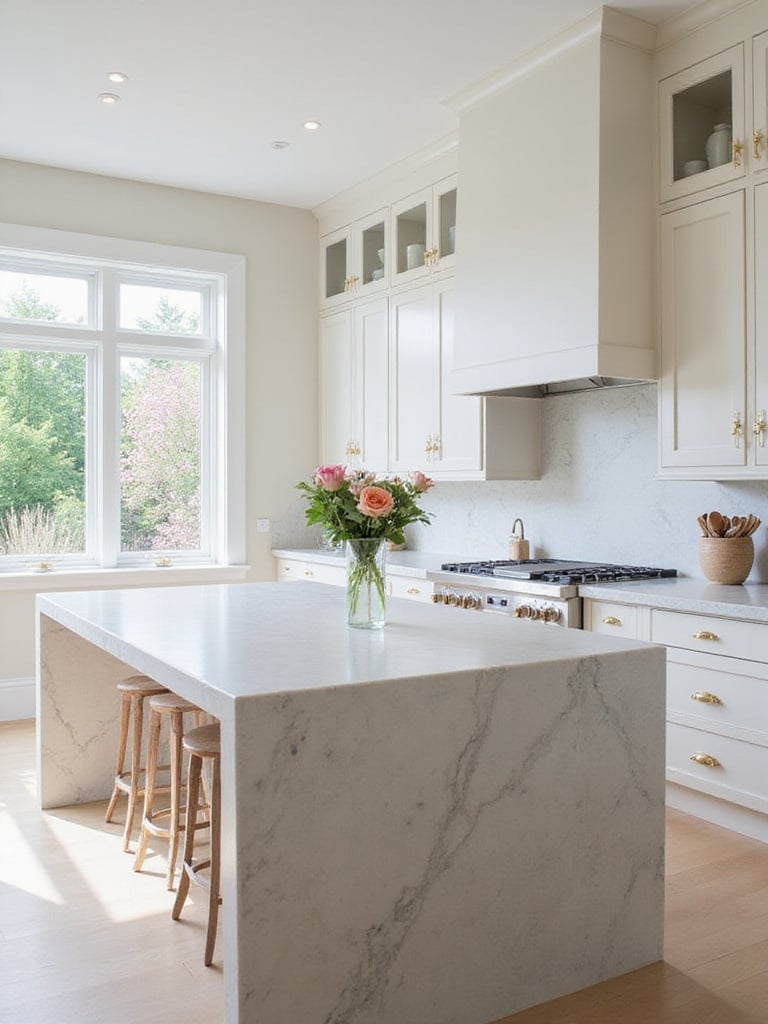
When considering countertop materials, cost matters. Quartz typically falls into a mid-range price point, generally positioned between granite and marble, offering excellent value. While basic granite slabs might sometimes be slightly more budget-friendly upfront, marble almost always carries a higher price tag. Considering the superior stain resistance and significantly lower maintenance demands of quartz, many homeowners find it the more cost-effective choice over the long run.
The heart of the matter is finding the perfect balance between beauty and practicality. Building upon the enduring appeal of quartz, let’s delve into a specific design feature that truly elevates the countertop to a statement element – the dramatic waterfall island.
Imagine a kitchen island that isn’t just functional, but also a breathtaking centerpiece. This is the magic of the waterfall island, a design trend that’s making waves in 2025. A waterfall island is distinguished by its countertop material, which extends vertically down the sides of the island, cascading to the floor in a continuous, seamless flow. Unlike a traditional island where cabinet sides are exposed, the waterfall edge creates an uninterrupted visual journey from countertop to floor, instantly lending a more contemporary and luxurious aesthetic.
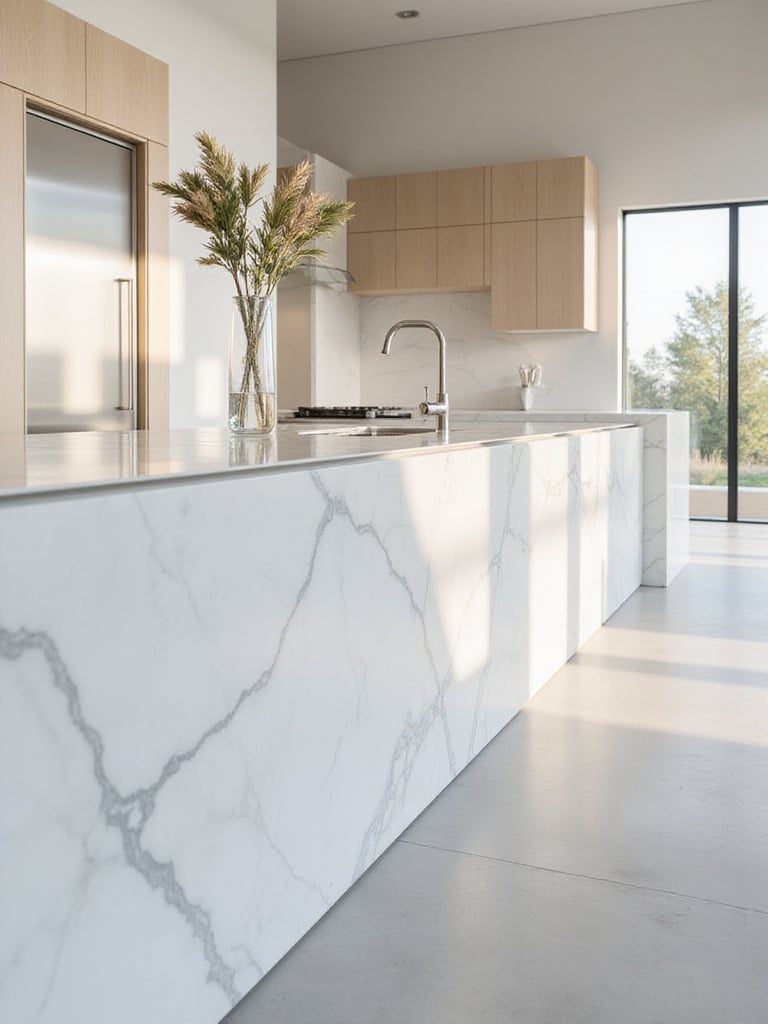
The allure of a waterfall island extends beyond mere aesthetics. Visually, they create a striking focal point, immediately drawing the eye and adding sophistication. The continuous surface minimizes visual clutter, contributing to a cleaner, more modern look. A waterfall island showcases beautiful countertop materials, highlighting unique veining and texture. Plus, the extended surface provides an added layer of protection to the island’s sides and can artfully conceal appliances for a more streamlined appearance.
The breakthrough came when designers realized they could incorporate integrated lighting beneath the waterfall edge to create a soft, ambient glow that highlights the material’s texture – an effect that’s particularly stunning in the evening.
From the solid expanse of waterfall islands, we transition to a kitchen design trend that embraces openness and display – the strategic use of open shelving.
Say goodbye to heavy, imposing upper cabinets, and hello to the airy elegance of open shelving! This kitchen design trend creates a sense of visual spaciousness, instantly making smaller kitchens feel larger and more open. Open shelving provides incredibly easy access to frequently used items – dishes, glasses, and spices are all within effortless reach. They offer a fantastic opportunity to display your favorite decorative items, injecting personality and unique style. For budget-conscious homeowners, open shelving can be more cost-effective than traditional upper cabinets.
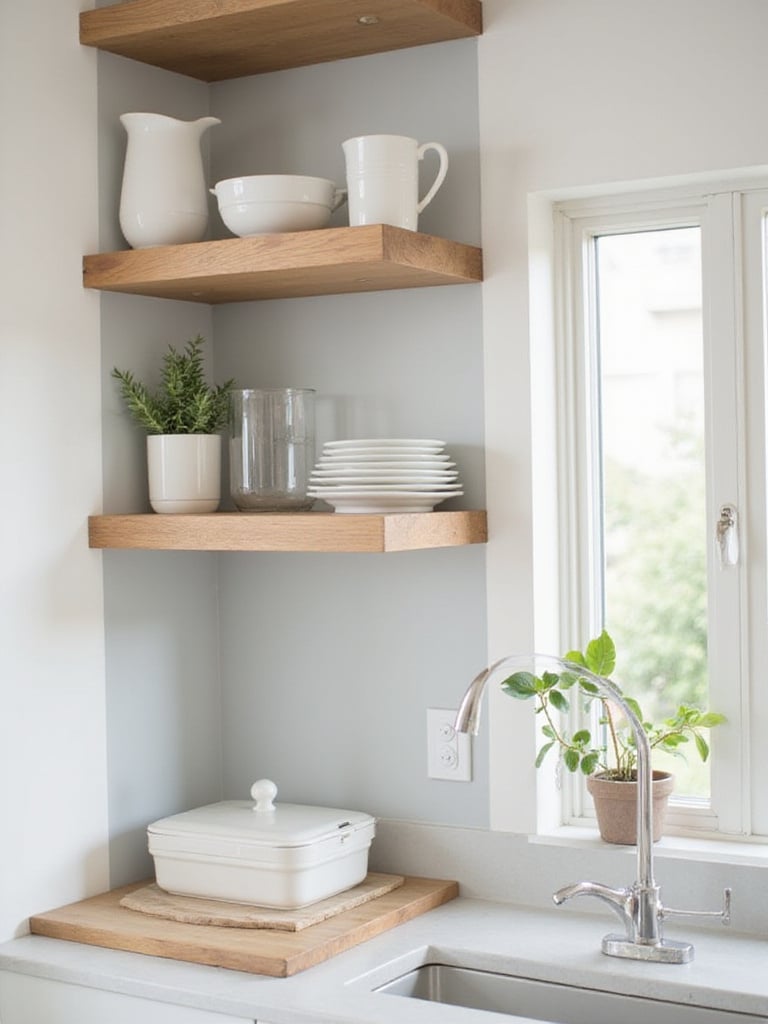
The key to successful open shelving is creating a curated and visually appealing display. Select items that are both functional and aesthetically pleasing – matching dishware sets, sparkling glassware, neatly stacked bowls, and uniform spice containers. Cookbooks with beautiful covers make excellent additions, as do decorative objects like plants and pottery. Resist the temptation to fill every shelf with mismatched items or things you rarely use. Open shelving thrives on a curated, intentional approach.
Let me paint you a picture: a single shelf displaying a carefully curated collection of vintage pottery or colorful cookbooks can create a stunning focal point that transforms your kitchen’s entire aesthetic. Plan your shelf placement carefully, considering the height in relation to countertops and ensuring they’re sturdy enough for your intended display.
Having explored the openness of shelving, let’s turn our attention to another area ripe for making a statement – the backsplash, where bold tiles and patterns are taking center stage in this year’s kitchen design trends.
Tired of kitchens that feel bland and generic? Statement backsplashes are here to rescue you! In 2025, homeowners are increasingly seeking ways to infuse their kitchens with personality. Statement backsplashes have emerged as a relatively low-commitment, yet high-impact way to achieve this, allowing you to inject color, texture, and personal flair. They offer a fantastic avenue for creative expression without requiring a full-scale renovation. Advancements in tile manufacturing have made bold and interesting options more accessible and affordable than ever.

What constitutes a “bold” backsplash in 2025? It’s about going beyond ordinary subway tile. Consider the luxurious appeal of natural stone with strong veining, textured slate, or unique granite. Glass tile opens up a world of vibrant colors and iridescent finishes. Metal tile in copper, brass, or stainless steel brings industrial chic with geometric patterns. Handmade tiles with their inherent imperfections and unique glazes add unparalleled character. Pattern-wise, explore geometric designs like herringbone or Moroccan-inspired motifs, large-format tiles, or even custom tile murals.
Things took an interesting turn when I extended a statement backsplash all the way to the ceiling in a client’s kitchen. The dramatic, eye-catching effect transformed the entire space, creating a stunning focal point that visitors can’t stop talking about.
From the visual impact of statement backsplashes, we shift our focus to a kitchen design trend that prioritizes seamlessness and visual harmony – integrated appliances.
For those who crave a sleek, uncluttered kitchen aesthetic, integrated appliances are the answer. These built-in or concealed appliances virtually disappear into surrounding cabinetry, creating a unified and streamlined appearance. Unlike standard appliances, which are freestanding and visibly distinct, integrated appliances hide behind custom cabinet panels that perfectly match the overall design. This seamless integration extends to refrigerators, dishwashers, ovens, and even range hoods, often with shallower depths to sit flush with cabinetry.
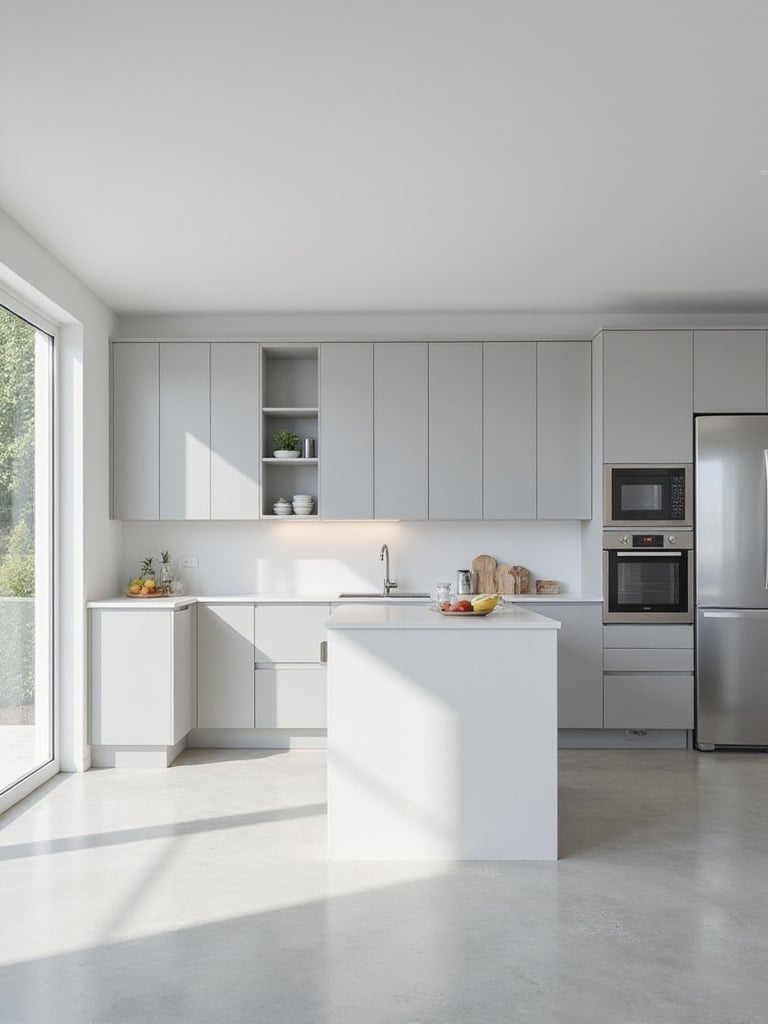
The primary advantage is the undeniably clean, modern, and uncluttered aesthetic they bring to a kitchen. By minimizing visual interruptions and creating a sense of spaciousness, they contribute to a cohesive design that feels sophisticated and calming. Beyond aesthetics, integrated appliances enhance the high-end, custom feel of a kitchen. Fewer exposed appliance surfaces can reduce dirt accumulation. The flush installation saves space, particularly valuable in smaller kitchens. They provide greater design flexibility and can increase a home’s overall property value.
The stumbling block is that integrated appliances require precise measurements and proper installation. Work closely with a kitchen designer and cabinet maker to ensure everything fits perfectly. Consider creating a hidden pantry behind cabinet doors that match the integrated refrigerator panels for a truly seamless look.
Moving from the sleek modernity of integrated appliances, we now embrace a touch of timeless charm with a beloved feature in 2025 kitchen design trends – the farmhouse sink.
Farmhouse sinks, with their distinctive apron fronts and deep basins, continue to capture hearts in modern kitchen designs. Their enduring appeal stems from a perfect blend of rustic charm and practical functionality. The generously sized, deep basins excel at tackling oversized pots, pans, and even tasks like washing bulky vegetables. The exposed front acts as a focal point, adding character and creating a warm atmosphere. In modern kitchens, farmhouse sinks offer a delightful counterpoint to sleek, minimalist elements, introducing visual interest and vintage-inspired style.
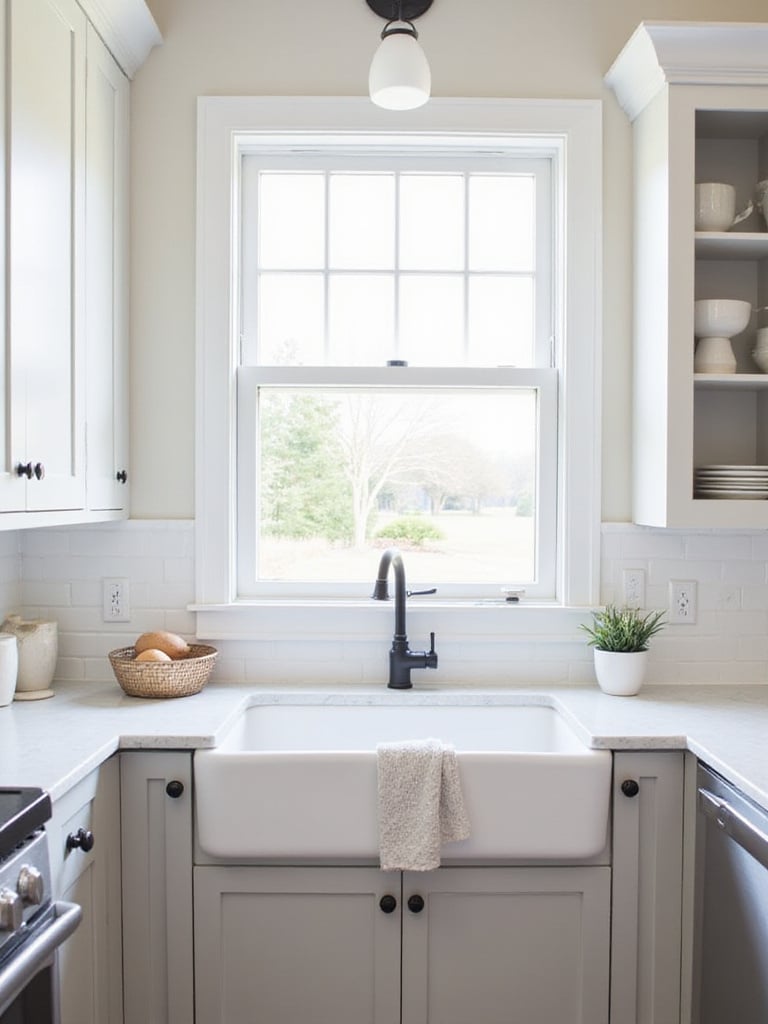
When choosing a farmhouse sink, material is key. Fireclay is highly sought-after for its exceptional durability, resistance to scratches and stains, and classic look. Stainless steel offers durability, ease of cleaning, and affordability, though it can be noisier. Cast iron provides excellent heat retention but is exceptionally heavy and can chip. Copper farmhouse sinks offer a unique aesthetic and are naturally antimicrobial, developing a beautiful patina over time, but they’re more expensive and require specialized cleaning.
It’s kinda like adding a piece of history to your kitchen – farmhouse sinks originated as a practical solution for washing large quantities of dishes and food in rural homes without running water. When choosing one, consider the dimensions of your existing cabinetry and the sink depth to ensure a comfortable working height.
From the rustic appeal of farmhouse sinks, we transition to a kitchen design trend that adds a touch of glamour and warmth – the incorporation of brass and gold hardware.
Elevate your kitchen’s style with the luxurious touch of brass and gold hardware. This kitchen design trend is rapidly gaining popularity, bringing sophisticated warmth and timeless elegance to 2025 designs. Brass and gold hardware act as visual jewelry for your cabinetry, offering a significant aesthetic upgrade. They create a beautiful contrast against a wide spectrum of cabinet colors, from classic whites to bold blues and rich greens. This resurgence aligns perfectly with the broader trend of embracing warmer, more inviting tones, moving away from cooler aesthetics.
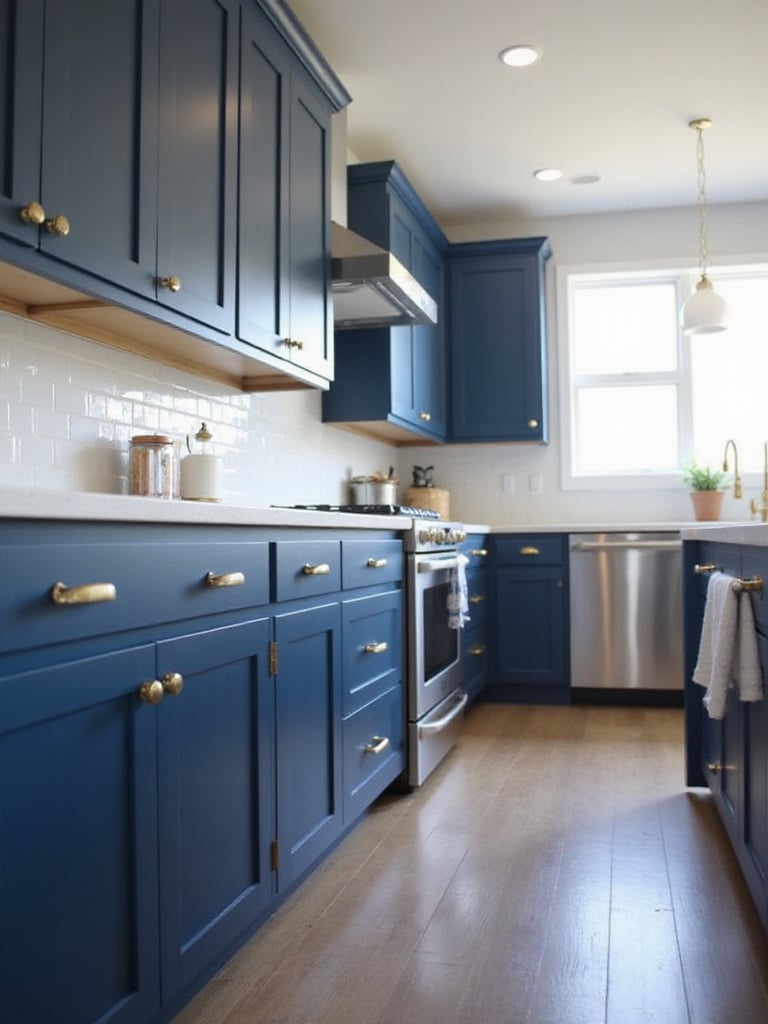
The beauty of brass and gold hardware lies in the variety of finishes available. Polished brass or gold offers high-shine, creating a bold and glamorous statement. Brushed brass provides a more subtle, matte finish with a gentle texture. Satin brass strikes a balance, offering a softer sheen than polished finishes. Antique brass features a darkened, aged appearance, adding vintage charm. Living finish brass is unlacquered, designed to naturally patina over time, developing unique character and depth.
My discovery began when I mixed brass hardware with other metal accents, such as stainless steel appliances and copper cookware. The layered, dynamic look created unexpected harmony and visual interest. Consider the scale of hardware relative to cabinet size – larger cabinets can accommodate larger pulls, while smaller cabinets benefit from smaller knobs.
Having explored the warmth of metallic hardware, we now delve into a kitchen design trend that brings drama and depth to countertops – the rise of darker surfaces.
Step into the dramatic side of kitchen design with the growing trend of darker countertops. Moving beyond light and bright, darker countertops are making a powerful statement in 2025, offering sophisticated contrast to lighter cabinetry and creating a striking focal point. They evoke immediate luxury and refinement, grounding a space with balance and intentional design. Beyond aesthetics, darker countertops with matte finishes can be more forgiving when it comes to hiding smudges and fingerprints.
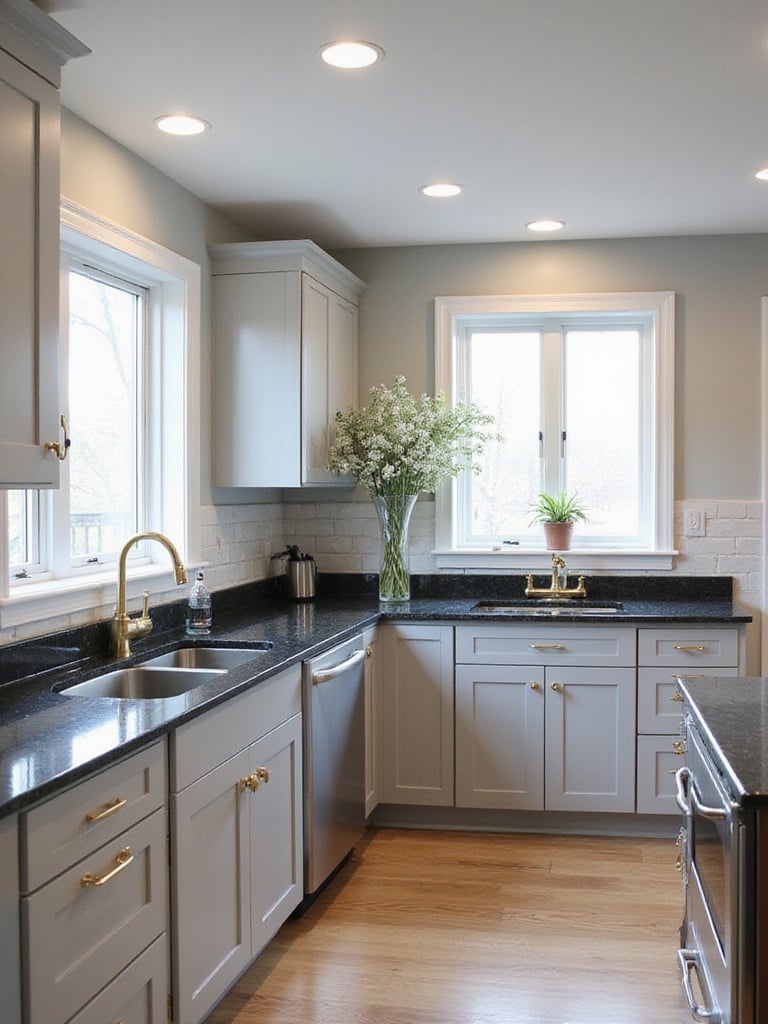
When considering darker countertops, diverse materials are gaining popularity. Black granite is a classic choice, renowned for durability and heat resistance. Concrete provides a modern, industrial aesthetic with customizable color options. Soapstone, with its soft, tactile feel, boasts a naturally dark hue that deepens beautifully over time. Engineered quartz offers numerous dark colors with consistent quality and low maintenance. For ultimate durability, Dekton or porcelain surfaces are ultra-compact and exceptionally resistant.
Do you see how huge that is? Dark surfaces completely transform a kitchen’s mood and energy. Before committing to a specific material, obtain samples and test them in your kitchen under different lighting conditions – what looks perfect in a showroom might appear completely different in your home’s natural light.
From the drama of dark countertops, we transition to a trend that plays with contrast and visual interest in cabinetry – the art of two-tone kitchens.
Why settle for just one color when you can have two? Two-tone kitchens continue to captivate homeowners in 2025 kitchen design trends, offering a versatile and visually engaging approach. Their enduring popularity stems from allowing individual expression and creating more dynamic, personalized spaces compared to uniform cabinetry. This trend reflects a broader desire for layered, interesting interiors, moving away from minimalist designs. Two-tone kitchens provide a fantastic opportunity to highlight specific architectural features or create distinct focal points.
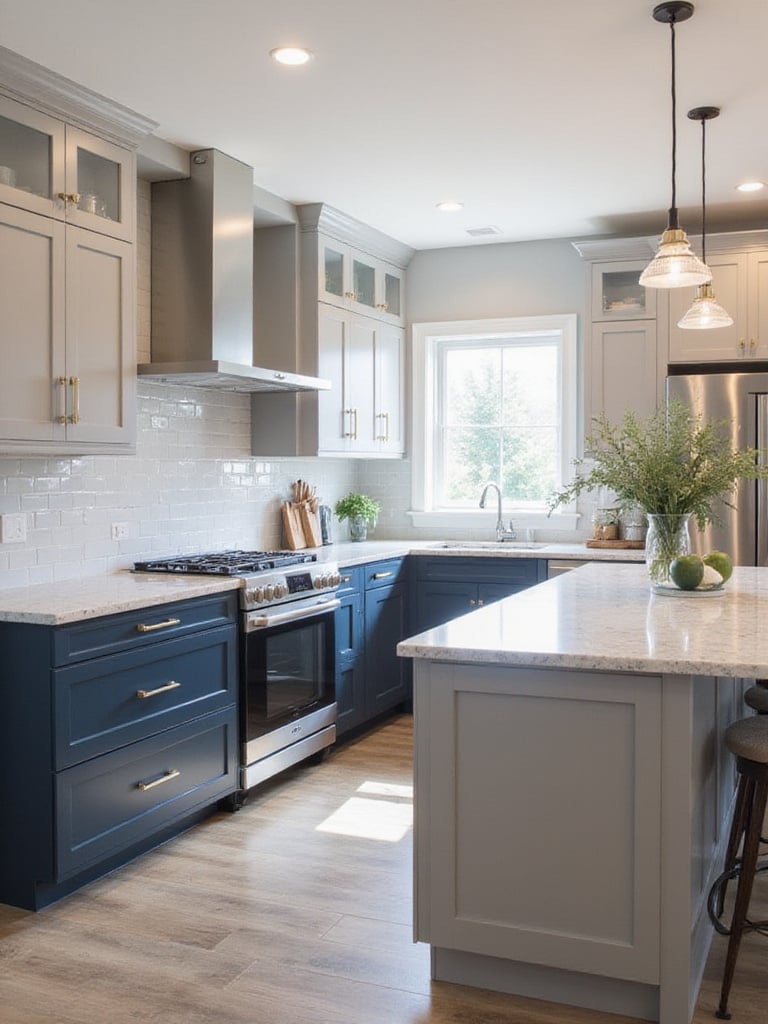
For 2025, we’re seeing sophisticated and nature-inspired palettes dominate two-tone kitchens. Warm neutrals paired with natural wood tones create an inviting atmosphere – light greige upper cabinets with natural wood lower cabinets in oak or walnut. Deep blues paired with light greys offer sophistication with navy lower cabinets and white uppers. Earthy greens and creamy whites bring tranquility with olive green lower cabinets and off-white uppers. The classic black and white combination remains relevant but with modern twists like matte black lowers with glossy white uppers.
Picture it this way: extending the upper cabinet color to the ceiling creates a taller, more spacious feel, while using a bold color on just the island creates a vibrant focal point. Before committing to a two-tone design, use online tools or consult with a professional to visualize the space and ensure the colors work harmoniously.
Having explored the visual dynamism of two-tone kitchens, we now turn our attention to a kitchen design trend that prioritizes organization and style behind closed doors – pantry perfection.
In the quest for a truly functional and beautiful kitchen, the pantry is no longer an afterthought but a design priority. Pantry perfection is about creating organized and stylish food storage that streamlines your kitchen workflow and enhances the overall aesthetic. Key considerations for walk-in pantries include maximizing vertical space with adjustable shelving and pull-out drawers, incorporating specialized storage solutions like wine racks and spice racks, and ensuring adequate lighting with motion-sensor LEDs. Many modern pantries include a small countertop for staging groceries or preparing quick snacks. The goal is a pantry that’s not only highly organized but also a visually pleasing extension of your kitchen design.
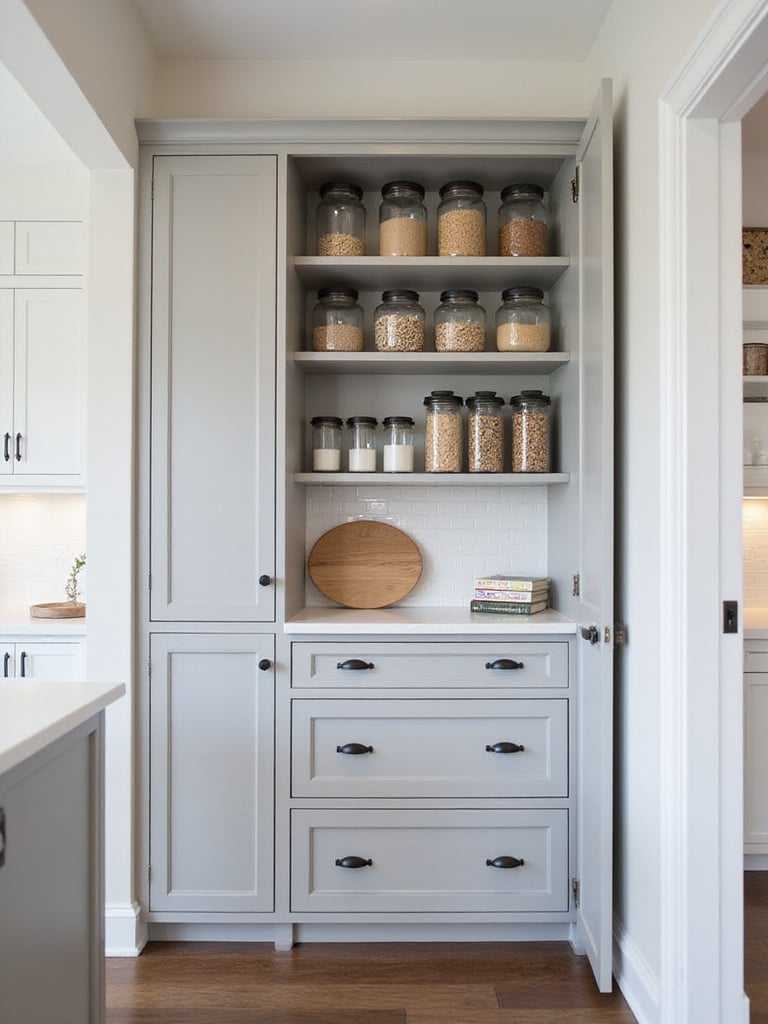
For smaller kitchens without walk-in pantries, creative solutions become essential. Think vertically with tall, narrow cabinets and innovative pull-out systems. Don’t overlook door-mounted storage racks for spices and small items. Consider converting a nearby closet into a mini-pantry. Clear, stackable containers maximize limited space and ensure visibility. Even toe-kick areas can house drawers for less frequently used items. Regardless of size, regular decluttering prevents food waste and maintains organization.
What complicates this is balancing accessibility with aesthetics. Create a dedicated ‘baking station’ within the pantry with a countertop, pull-out mixer shelf, and organized ingredient storage. Use clear, stackable containers of various sizes for dry goods and label everything clearly to maintain order.
From organized pantries, we shift our focus to a kitchen design trend that’s about making conscious choices for the planet – sustainable and eco-friendly materials.
In 2025, kitchen design is increasingly intertwined with environmental responsibility. Choosing sustainable materials is no longer just a niche trend but a core consideration for creating a conscious kitchen. Several materials lead the way: bamboo, a rapidly renewable resource, works for cabinetry, flooring, and countertops. Reclaimed wood adds character while reducing deforestation. Recycled glass countertops divert waste from landfills. Cork flooring offers comfort and sustainable harvesting. Linoleum, made from natural materials, provides durability and biodegradability. For cabinetry, look for FSC-certified materials ensuring responsible forest management.
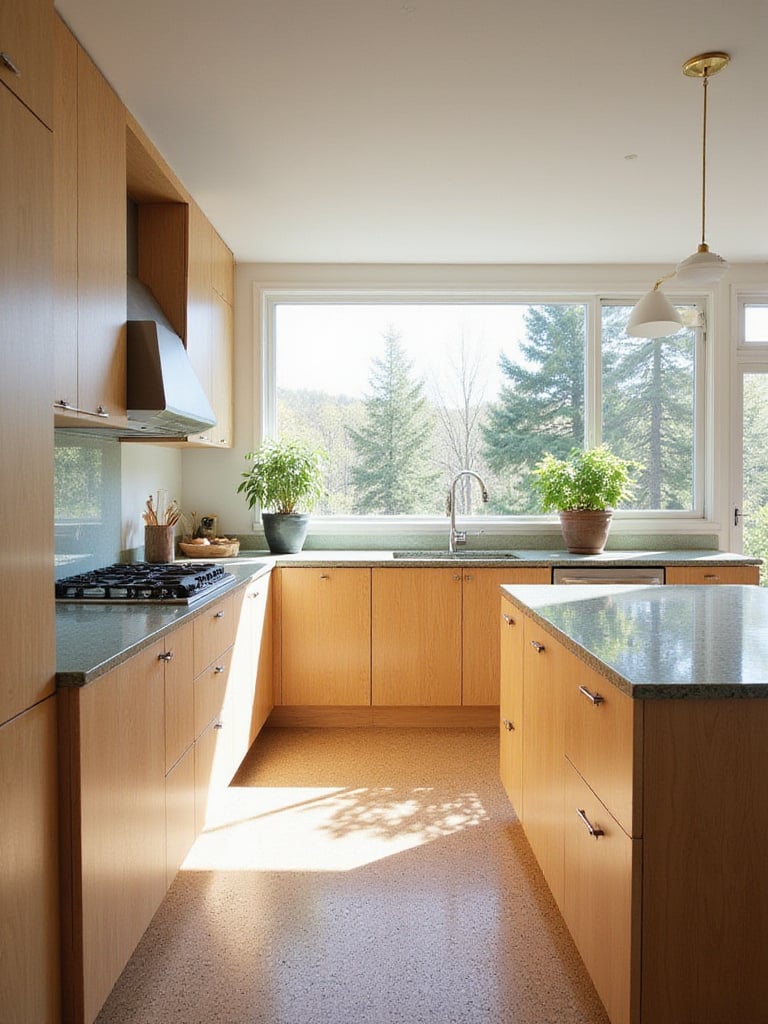
A truly “conscious” kitchen extends beyond materials to the entire product lifecycle. Prioritize locally sourced materials to minimize transportation emissions. Opt for low-VOC paints and finishes to improve indoor air quality. Choose energy-efficient, water-saving appliances. Ultimately, designing for longevity and durability is key to sustainability, reducing the need for frequent replacements.
The ripple effects are enormous when you create a vertical herb garden using reclaimed wood – adding greenery, fresh ingredients, and a living element to your kitchen. Before demolition, salvage reusable materials from your existing kitchen to donate or repurpose, minimizing waste and extending the lifecycle of perfectly good items.
Building on conscious design, we now explore kitchens designed for the fluidity of modern life – flexible and multifunctional spaces in today’s kitchen design trends.
The modern kitchen is no longer confined to just cooking; it’s evolving into a dynamic hub for socializing, working, studying, and relaxing. This shift reflects the demands of contemporary living, where spaces need to serve multiple purposes. Open-concept layouts, smaller living spaces, and remote work have all contributed to the demand for kitchens that transform and adapt. Flexibility and multifunctionality have become paramount in 2025 kitchen design trends.
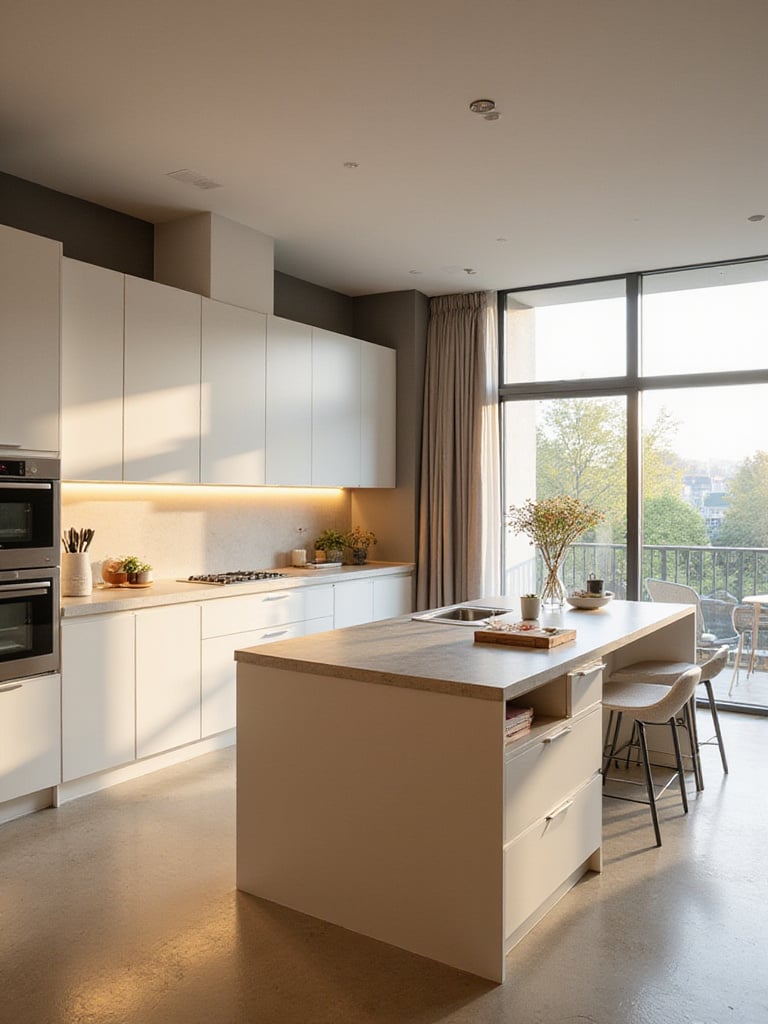
Several key elements create a flexible, multifunctional kitchen. Open-concept designs promote easy flow between kitchen and adjacent living areas. Moveable islands and furniture provide adaptable workspace and seating options. Hidden storage solutions keep clutter at bay, allowing seamless transitions between functions. Convertible furniture, like fold-away tables or islands with drop-leaf extensions, enhances adaptability. Integrated technology with smart appliances and lighting systems adds another layer of flexibility. Dual-purpose surfaces that withstand both food preparation and work-from-home tasks maximize functionality.
You might be wondering how to implement this in your own home. Start with a kitchen island featuring a built-in desk area that can be hidden when not in use. Invest in modular furniture that can be easily rearranged to suit different needs – from intimate family dinners to work sessions to large gatherings.
From adaptable multifunctional kitchens, we now turn to a kitchen design trend that creates cozy and inviting dining spaces – banquette seating.
Imagine a kitchen dining area that feels both stylish and intimate. Banquette seating is making a strong comeback, offering a charming and space-efficient way to create cozy dining nooks. The benefits are numerous: banquettes excel at maximizing space utilization, particularly in smaller kitchens or breakfast nooks, by efficiently using corners and walls. They cultivate an intimate dining environment, fostering connection and comfort. Many designs incorporate built-in storage beneath the seating for kitchen essentials. Finally, banquettes add a unique design element, transforming a standard dining area into a personalized focal point.
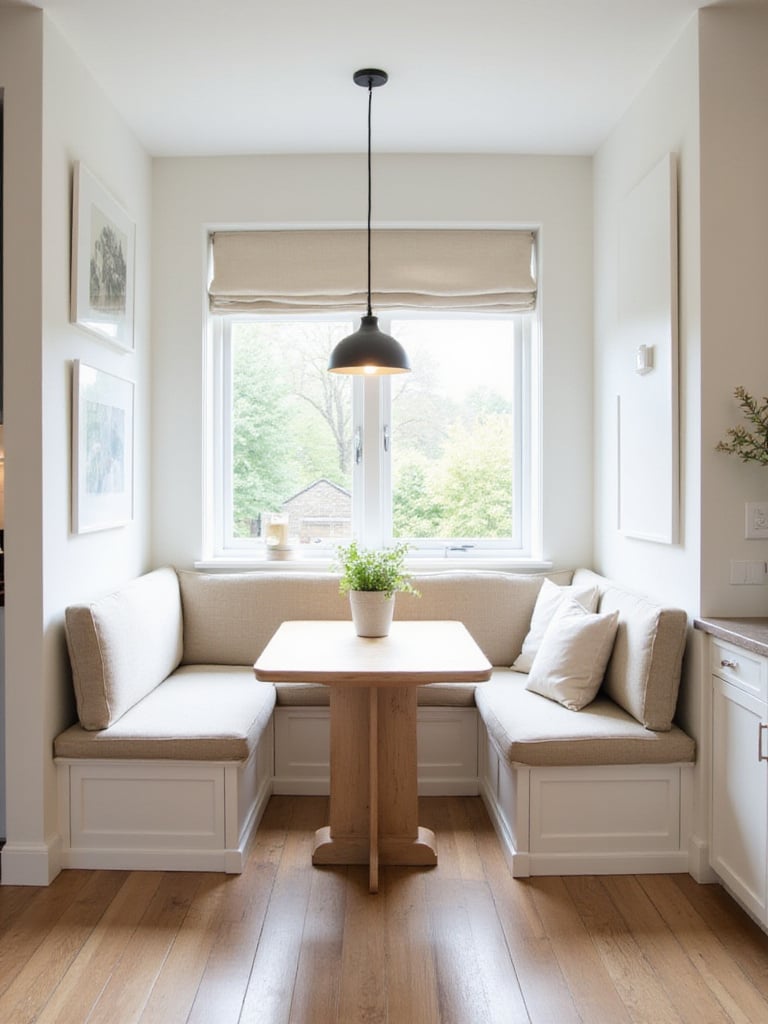
Planning a kitchen banquette requires careful consideration. The size and shape should be proportioned to your space and the number of people it needs to accommodate. Ergonomics matter – ensure comfortable seating and table height. Choose durable, stain-resistant fabrics that are easy to clean. Incorporate well-designed back support to enhance the dining experience. Adequate task lighting for dining and ambient lighting for atmosphere are essential. Ensure the banquette design integrates with your existing kitchen aesthetic for a cohesive look.
My breakthrough came when integrating a curved banquette into a bay window, creating a sun-drenched breakfast nook with panoramic views. The word ‘banquette’ comes from the French word for ‘small bench’ – but there’s nothing small about the impact it can have on your kitchen’s functionality and charm. Maximize storage by incorporating drawers or lift-up seats into the design.
From the cozy charm of banquettes, we transition to a kitchen design trend that embraces the beauty of the past – incorporating vintage and antique accents.
In a world of mass-produced designs, vintage and antique accents are emerging as powerful tools for injecting character and soul into modern kitchens. Why are these timeworn treasures becoming so popular in 2025 kitchen design trends? In contrast to sleek, minimalist designs that can feel sterile, vintage elements offer warmth, personality, and tangible history. They provide unique visual interest, tell a story, and prevent kitchens from feeling impersonal. They contribute to a layered aesthetic that reflects personal style and connection to the past.

The possibilities for incorporating vintage accents are wonderfully diverse. Consider repurposed vintage cabinets or swapping out hardware for antique doorknobs and pulls. Antique lighting fixtures – chandeliers, pendants, sconces – can add unique focal points. Vintage appliances, whether functional or decorative, bring nostalgic charm. Antique furniture like a vintage island, farmhouse sink, or repurposed hutch becomes a statement piece. Decorative items – antique scales, vintage canisters, old cookbooks, copper pots – contribute to the vintage ambiance. Even architectural salvage elements like reclaimed beams or vintage tiles can create truly unique kitchens.
Here’s what happened when I created a focal point with a beautifully restored vintage stove in a client’s minimalist kitchen: the juxtaposition of old and new created magnetic visual tension that drew everyone’s eye. Shop at antique stores, flea markets, and architectural salvage yards to find unique and affordable pieces with history and character.
From vintage charm, we now move into the raw and functional aesthetic of industrial-style kitchens, another compelling direction in 2025 kitchen design trends.
Embrace the raw beauty and functional aesthetic of industrial style in your kitchen. This trend, inspired by factories and urban lofts, celebrates exposed materials and utilitarian design. The defining characteristics? Exposed brick or concrete walls, visible ductwork and piping proudly displayed rather than concealed. Metal accents, especially steel and iron, feature prominently in appliances, shelving, and hardware. Countertops often showcase concrete or wood, while open shelving replaces traditional upper cabinets. Utilitarian lighting fixtures reminiscent of factory settings complete the look. The overall feel is one of unfinished, functional beauty – a celebration of raw materials and practical design.
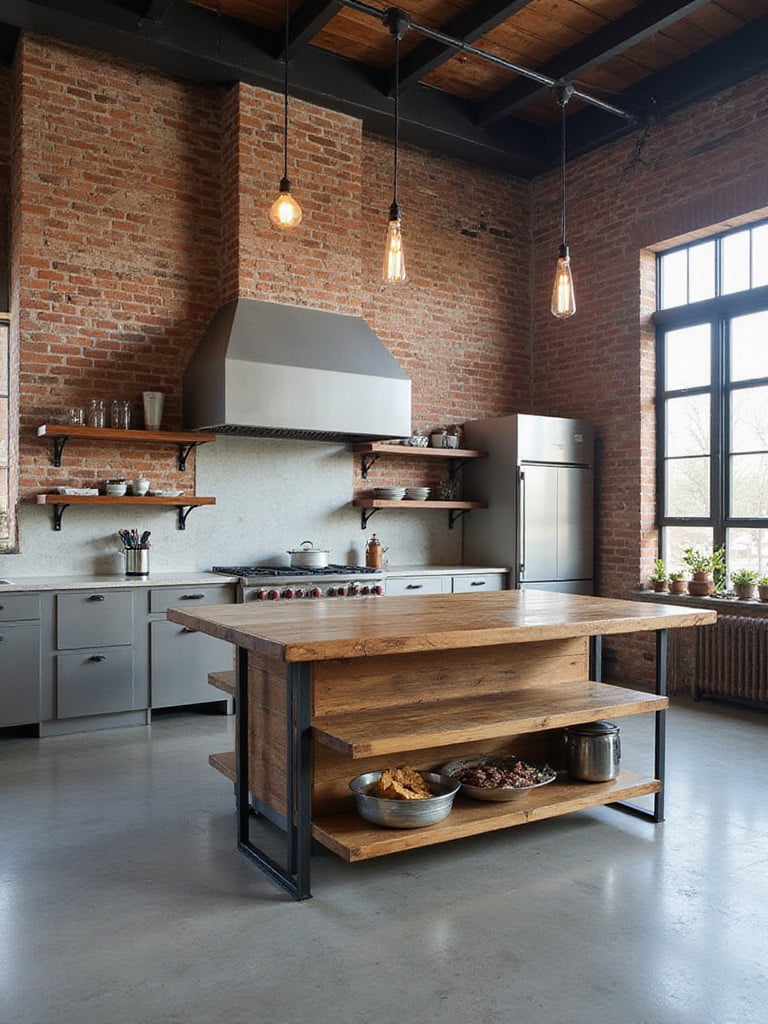
The materials palette in industrial kitchens is intentionally robust. Concrete reigns supreme for floors, countertops, and backsplashes. Exposed brick adds texture and warmth. Metal appears in various forms – stainless steel appliances, iron shelving, and copper accents. Reclaimed wood softens the harshness of metal and concrete, adding warmth to islands, shelving, and accent walls. Glass plays a role in pendant lights and cabinet doors, providing visual transparency and reinforcing the utilitarian feel.
Let me show you another perspective: industrial design isn’t just about aesthetics – it’s about honoring the authentic purpose of each element. Create a focal point with a large, reclaimed wood island featuring a concrete countertop and metal legs. For a faux exposed brick wall, use brick veneer panels or apply a textured paint technique with a brick stencil.
From industrial rawness, we transition to a trend that champions simplicity and functionality – minimalism and clean lines in modern kitchen design trends.
In a world saturated with visual noise, minimalist kitchen design offers a refreshing retreat into simplicity and calm. This trend features clean lines, uncluttered surfaces, and functional focus – perfect for those seeking a serene kitchen space. Key characteristics include straight lines in cabinetry, countertops, and layout. A neutral color palette – whites, grays, blacks, and natural wood tones – creates visual harmony. Handleless cabinetry enhances the sleek look. Integrated appliances blend seamlessly into cabinetry. Concealed storage maintains a clutter-free environment. Ornamentation is minimal, with focus on quality materials rather than excessive decoration. The goal? A kitchen that’s aesthetically pleasing, highly functional, and a haven of calm.

You don’t need a full renovation to achieve minimalism. Start by decluttering countertops and creating visual spaciousness. Invest in matching storage containers for visual uniformity. Replace ornate hardware with sleek, modern options. Paint walls in neutrals for a clean backdrop. Swap ornate light fixtures for streamlined designs. Consider replacing open shelving with closed cabinets or carefully curate displayed items. Focus on simplifying the aesthetic, eliminating visual noise, and prioritizing functionality.
The crucial element is balance – incorporate a single statement piece, like a large minimalist pendant light, to add interest without clutter. Before starting a minimalist kitchen project, inventory everything and honestly assess what you truly need. Donate or discard the rest to create the foundation for your serene space.
Moving from minimalist simplicity, we now embrace a kitchen design trend that brings the rejuvenating power of nature indoors – biophilic design.
Connect with nature and transform your kitchen into a revitalizing oasis through biophilic design principles. This kitchen design trend is about bringing the outdoors in, creating a space that fosters well-being and connection to the natural world. Key elements include live plants – herbs, vegetables, decorative greenery – throughout the space. Maximizing natural light through large windows and skylights floods the kitchen with sunshine. Natural materials like wood, stone, and bamboo in cabinetry, countertops, and flooring reinforce nature connections. Indirect elements include patterns mimicking nature, organic shapes, and a color palette of greens, browns, blues, and earth tones. Good ventilation and outdoor views further enhance the biophilic approach.
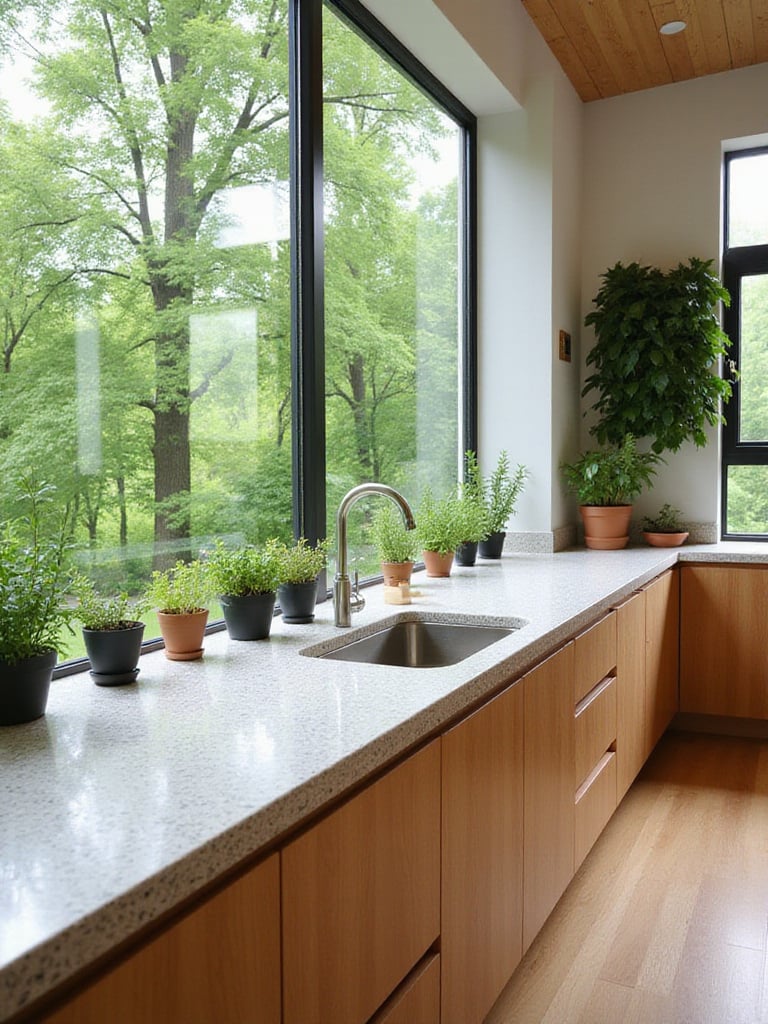
The popularity of biophilic kitchen design stems from awareness of nature’s positive impact on well-being. Studies consistently show that nature exposure reduces stress, improves mood, boosts creativity, and enhances health. Bringing these elements into the kitchen creates a calming environment. In increasingly urban settings with smaller living spaces, intentionally connecting with nature indoors becomes vital for physical and mental well-being.
This changes everything, doesn’t it? Installing a living wall of herbs near a window provides easy access while cooking and creates a stunning visual focal point. Start small by adding a few potted plants to countertops or shelving. Observe how they thrive and adjust your collection accordingly, gradually transforming your kitchen into a nature-infused sanctuary.
Finally, as we conclude our exploration of 2025 kitchen design trends, we turn to a design element that adds depth and tactile interest – textured walls and backsplashes.
Move beyond flat, smooth surfaces and embrace the tactile appeal of textured walls and backsplashes. This kitchen design trend offers a way to add depth, dimension, and visual interest, moving away from sterile or one-dimensional spaces. Textured surfaces personalize a kitchen, inject character, and create a dynamic environment that appeals to the senses. In our increasingly digital world dominated by smooth screens, the desire for tangible textures provides a grounding, sensory experience within our homes.
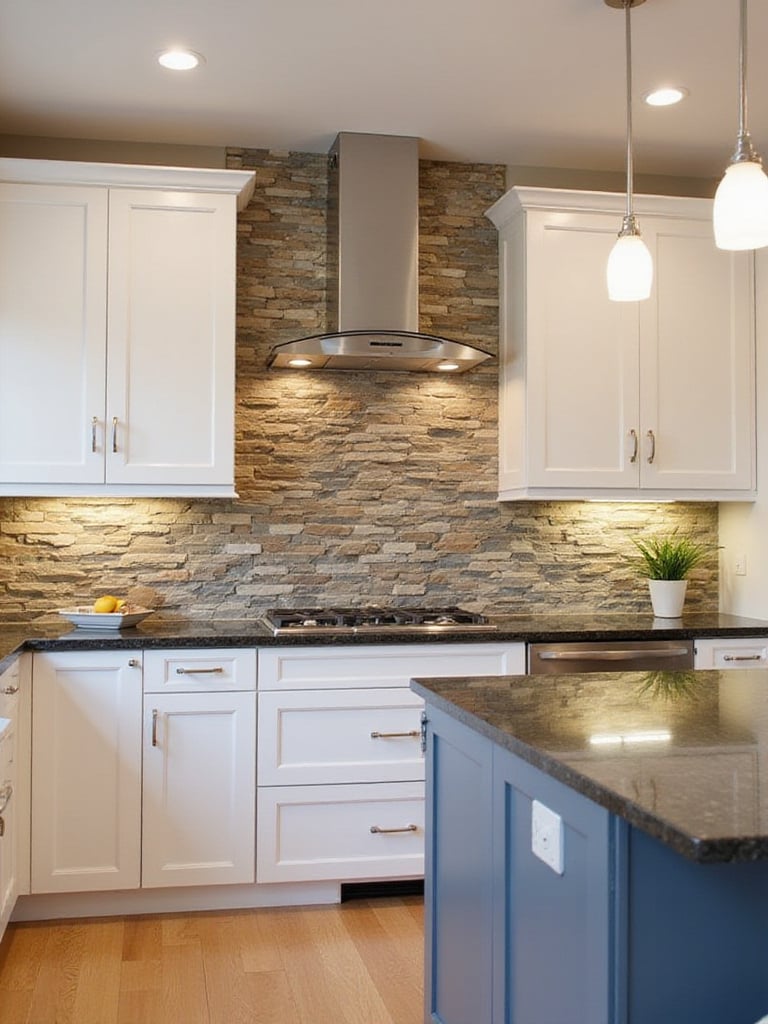
Diverse materials create textured walls and backsplashes, each with unique aesthetics. Natural stone in stacked or split-face form creates organic feel. Brick brings industrial-chic vibes. Tile offers endless possibilities – three-dimensional, textured ceramic, or varying-height mosaics. Wood introduces warmth through reclaimed planks or textured panels. Metal provides modern edge with embossed panels or textured tiles. Plaster creates subtle, artistic textures. Concrete offers industrial modernism. 3D wall panels provide easy-to-install, customizable options for adding texture.
The missing piece is understanding how texture affects not just visuals but also acoustics – textured walls can improve kitchen sound quality by absorbing noise, making the space more pleasant for conversation. Create a focal point behind the stove with hand-painted tiles featuring raised designs, ensuring the wall is properly prepped for proper adhesion.
As we conclude our journey through 2025’s kitchen design trends, it’s clear this year celebrates kitchens that are beautiful, personal, and perfectly tailored to modern life. From smart technology integration to bold colors and textures, and conscious sustainable choices, these trends empower you to transform your kitchen completely.
Whether you’re drawn to sleek minimalism, nature-inspired elements, or vintage charm, there’s inspiration here for your next kitchen renovation. Take these ideas and make them your own, creating not just a functional room, but the vibrant heart of your home for years to come.